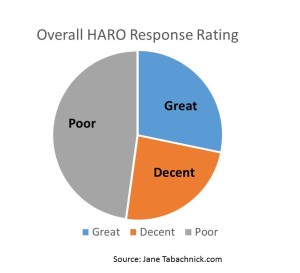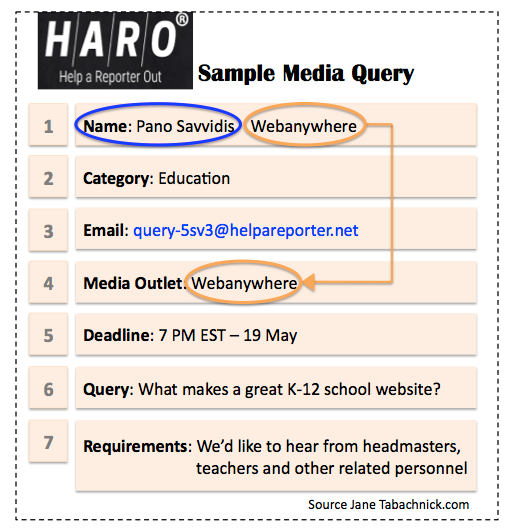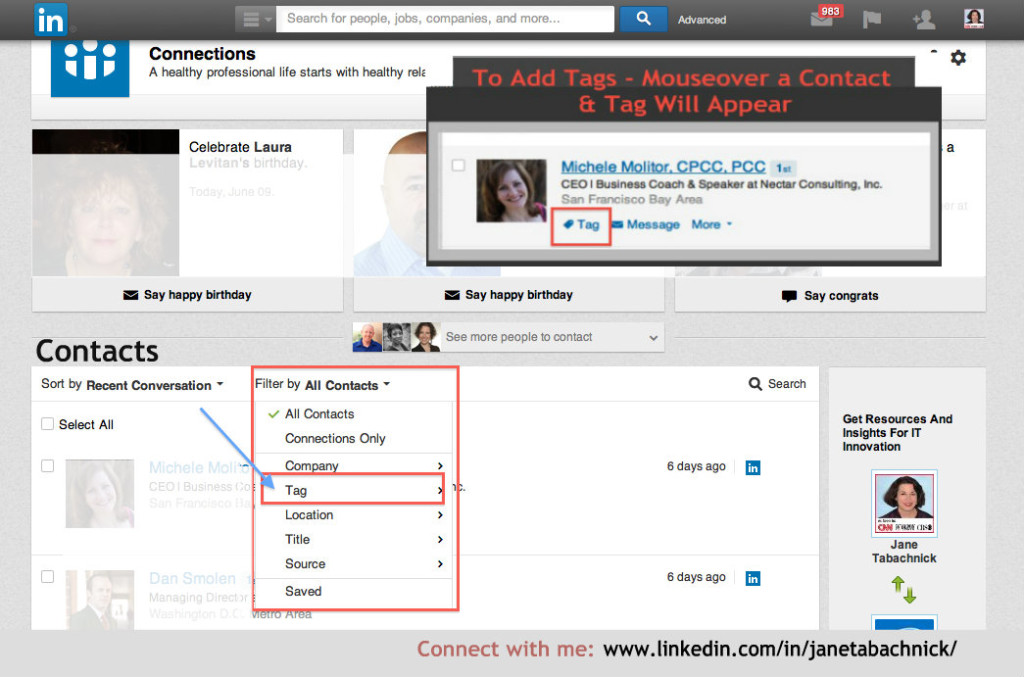Not getting responses to your Help a Reporter Out HARO media pitches? The reason may be that your pitches don’t include the 7 must-haves for a successful HARO media pitch. Either you aren’t giving journalists what they need, or your pitches simply stink. The pitch that does satisfy on all counts, gets the publicity.
I am not a journalist, however I occasionally use HARO to find sources for a story, a blog post, or book that I am working on. My team and I use HARO to get publicity for myself and my clients, and we’ve had a lot of success with it.
After posting a query on HARO recently, I was surprised by the number of pitches that missed the mark. Some simply sucked. And it doesn’t have to be that way.
In an effort to help you not be one of the 45 % of pitches that suck, I analyzed the responses I received. The collated results are presented here. It was a small sampling; not sufficient to call this a scientific study, but valuable information if you put it to use. I also interviewed a few journalists on best practices for HARO media pitching, and what they like to see in a pitch.

I started by asking for insight on succeeding with HARO from its founder Peter Shankman, who said:
“In the past ten years, journalists have been tasked with doing ten times more with five times less. Truly want to get your story placed? Do as much of the journalist’s work as you can. Give smart background. When you offer a source, make sure they can talk and know what they’re saying. Beat the herd by being just a little bit better.
Oh, and be fast. Super, super fast. Get your reply out within five minutes of receiving the HARO.”
The key to pitching HARO successfully comes to, as Mr. Shankman says, “doing as much of the journalist’s work as you can.” In an age of 24/7 news, with reduced newsroom staff, journalists’ jobs are more challenged than ever, so your key to getting the publicity you want is to literally help a reporter out.
How journalists use HARO:
- To find sources, as well as to help develop a story idea they are working on
- When they are on a tight deadline, as well as for stories with more lead time
“I use it both for same-day deadlines and for long-term features and I’ve really gotten wonderful stuff for my stories from it – both from average people, whose opinions and experiences are hugely important in my work, and from experts from every field,” – an editor for a major U.S. news organization who uses HARO several times a month [they requested anonymity].
To get started let’s look at a sample HARO query – broken up into sections.

What Journalists want in a response to a query:
Journalists told us they want you to provide all the requested information in a concise response so that if they are on a tight deadline, they have all the information that they need to use you as a source without needing to speak to you. That said, it’s very important to include a phone number and other contact information, should they have the time and want to follow up and verify information, do an interview or get additional information.
What Journalists don’t want …
Busy journalists don’t want to have to guess who you are, what information or expertise you have to share, to have to try and locate your contact info, or try and locate you. This may sound obvious; however, many pitches were missing some or all contact info.
I encourage my clients to think of their pitch like a gift, with their entire pitch and supporting assets nicely and attractively packaged, so it’s all in one place. Incomplete, off topic or unclear pitches just clog a busy journalist’s inbox and often just get deleted.
“You can have everything in life you want, if you will just help enough other people get what they want.” – Zig Ziglar
7 Must-Haves For A Successful HARO Media Pitch:
Get your pitch in asap.
The number of responses to a query can be anywhere from 10-100 depending on the topic or media outlet. Queries from top national publications tend to get more responses than smaller or lesser known media. Busy journalists often go with the first great pitch they receive.
Create a compelling subject line
In a sea of responses [average query gets 35-100 responses], your subject line can help your email get noticed, though a long query title, leaves less room for your unique pitch to show in the journalist’s inbox view.
24% of HARO media pitches rated ‘very good’
Use a greeting
Business communication usually start with a greeting. Granted, some HARO queries are posted anonymously, so you don’t have an actual name of a person to address. This is not something our journalists noted, nor a requirement, however a greeting is a standard business pleasantry. One that addresses the journalist by name is courteous and also demonstrates you have read the query carefully, which goes a long way towards your credibility.
52% started their pitch with a greeting, addressing me by name. The balance had no greeting at all.
Establish your credentials
To be used as a source by a journalist, you need to let them know what your credentials are, concisely, right within your pitch. Demonstrate you are a good, expert source for their story. One mistake we see repeatedly is “my bio is on my website.” A busy journalist with 95 other responses, will either hit delete or just move on to the next pitch which contains all the information they are seeking.
64% of HARO media pitches established their credentials within the email
Fit the requirements
While not all pitches have requirements, the ones that do have them for a specific reason, so it’s important to respond only if you are a fit.
47% of pitches fit our requirements, 35% might be a fit but needed clarification, 16% didn’t fit at all
“And a lot of the people weren’t on target. I was very specific in my HARO query about how I was looking for responses on how to invest. Another example, in a query on the business side of co-working spaces, a lot of people responded back saying, ‘Oh, I work at a co-working space. Would you like to talk to me?’ And that’s not useful.” – Dawn Reiss, freelance journalist /writer for various national outlets.
Complete, Cut and Paste Response
The ‘cut and paste’ response is where the person has answered the questions posed in the query, right within their email pitch. A busy journalist doesn’t want to interview you to find out if you are the right source for their story. Or they might like to interview you, but with limited time, they’ll have to do with taking your response as is, and cutting and pasting it into their story, citing you as the source.
“I much prefer a response that actually provides the comment or information the person wants to share.” – An editor for a major U.S. news organization who uses HARO several times a month [and requested anonymity].
In other words, if a query asks for you best tips for mobile marketing, include your best tips for mobile marketing right in your email pitch.
Include a phone number
While our journalists have stated that they often don’t have time to speak with you for a story, they still expect you to include your phone number. That way, should they want to get additional information, touch base before going to print or interview you, they already have your contact info.
Only 41% of our respondents included a phone number in their pitch
I hope you will use this information to help you succeed in your HARO media pitches. To your publicity success!
Related Content:



